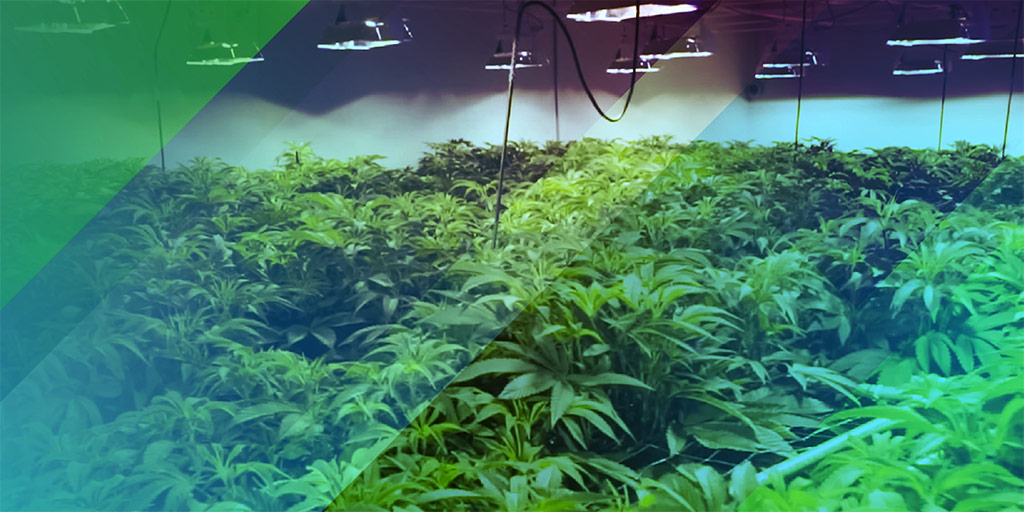Hydroponics 101: Growing Cannabis as a Career

The cannabis industry is full of jobs, from horticulture to marketing to finance, and more. It can be overwhelming deciding which path fits your skills best when deciding to pursue your dream of working in the cannabis industry. If you’re interested in hydroponics and cannabis horticulture, here’s a quick rundown of what it encompasses and the different methods you might encounter as a hydroponic plant grower.
What Is Hydroponic Growing?
Hydroponic growing is a method of growing plants without soil. When you break down the word hydroponic, “hydro” means water and “ponos” means work. This means that water rather than soil does the work, providing life to the plant with the addition of added nutrients. In traditional growing methods using soil, the roots of the plants have to find their nutrients in the soil, whereas with hydroponic growing methods, the nutrients are dissolved directly into the water and plants sit in what is called a wet grow environment, like clay balls.
Hydroponic horticulture systems also tend to take up less space than traditional growing methods, and the plants grow quicker and bigger.
Soil vs. Hydroponic Growing
When it comes to determining which is best for growing cannabis, there are pros and cons to both soil and hydroponic growing.
Cannabis plants like soil that is slightly acidic and drains well. It’s common for cannabis growers to add extra nutrients to the soil to make sure it gets all that it needs and perlite to help with drainage. There are pros to using soil to grow cannabis, such as the fact that it has been subjectively said it makes marijuana taste better, and it is easier to grow in dirt than with hydroponics, especially for those new to producing cannabis plants. There are cons however, such as the fact that the cannabis plant tends to grow slower in the vegetative state than it does in a hydroponic grow method, and it doesn’t tend to yield as much as hydroponically grown cannabis.
When it comes to using a hydroponic method, some of the greater pros tend to be that you have more control over the nutrients than you do with using soil, which is why craft growers have perfected this art to create small-batch cannabis harvests using special proprietary nutrient recipes. It also harvests faster and is less likely to fall victim to pests and soil-borne diseases. The cons to hydroponic growing methods of cannabis include that some believe cannabis doesn’t taste as good when grown hydroponically and the growing process can be complicated, making it an undesirable option for first-time grow operations.
Different Hydroponic Methods
Now that you understand what hydroponic growing is, and how it differs from soil methods, it’s time to explore the different methods of hydroponic growing. When it comes to hydroponic growing methods, there is deep water culture, ebb and flow, drip system, nutrient film technique, and the wick system.
Deep Water Culture: This method is when cannabis plants are placed in buckets filled with water, nutrients, and an air pump, allowing for a constant supply of oxygen.
Ebb and Flow: Cannabis plants are placed in a tray that contains a water inlet and outlet. The tray is then flooded, submerging the roots with oxygen and nutrient-rich water for a period of time, and then the water drains out.
Drip System: In the drip system method, cannabis plants are placed in a growing medium, with exposed roots, and are supplied with water from an external reservoir via drip pipes.
Nutrient Film Technique: For the nutrient film technique, cannabis plants are placed on an angled tube, allowing water to enter from one side of the tube and exit at the other. As with ebb-and-flow and drip systems, the oxygen and nutrient-rich water comes from a reservoir, and the roots of the cannabis plant are exposed to flowing water.
Wick System: The wick system puts cannabis plants in a tray above a tank of water, and the roots of the plant are in between the tray and the water. The roots are partially submerged into the water tank, allowing the roots to transport water from the tank to the rest of the plant.
It can be intimidating and overwhelming researching the different types of cannabis jobs that are out there, including cannabis grow jobs. Excelsior’s Graduate Certificate in Cannabis Control program is here to help with that, by exploring the different career paths available and teaching you the tools necessary to succeed in any path you choose. And we know that no matter what path you pursue, having an understanding of the complex regulatory environment will serve you well.



